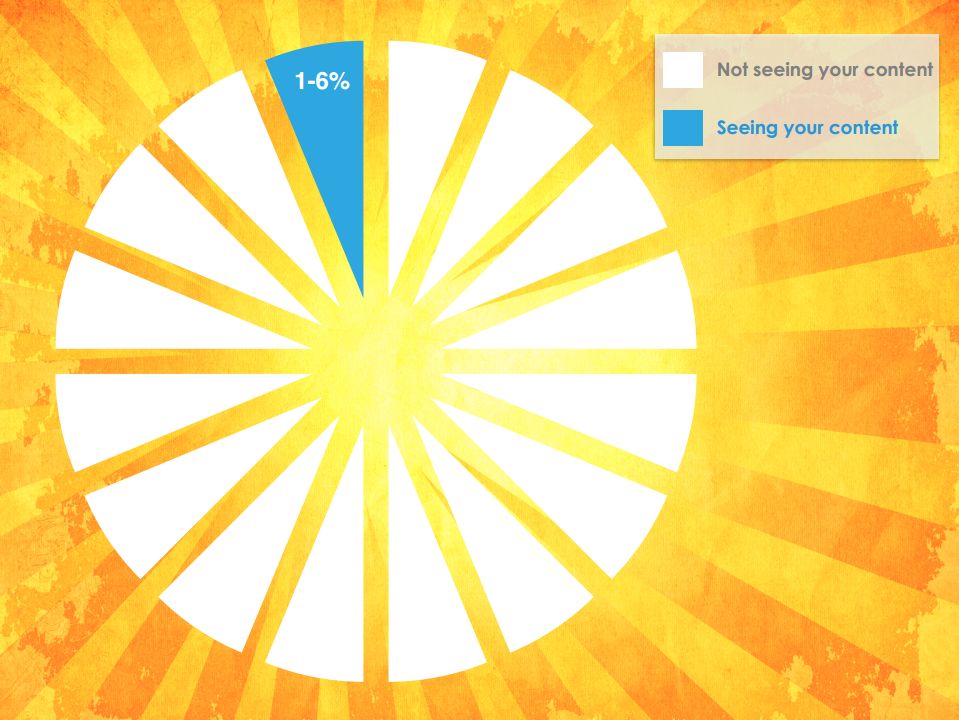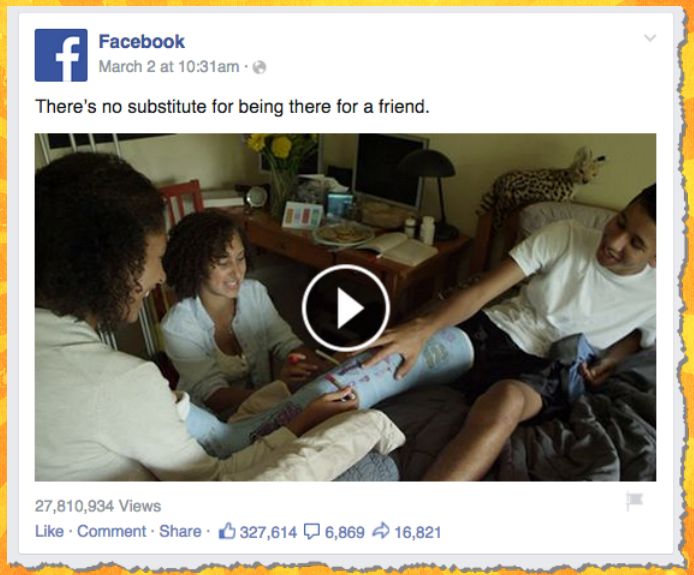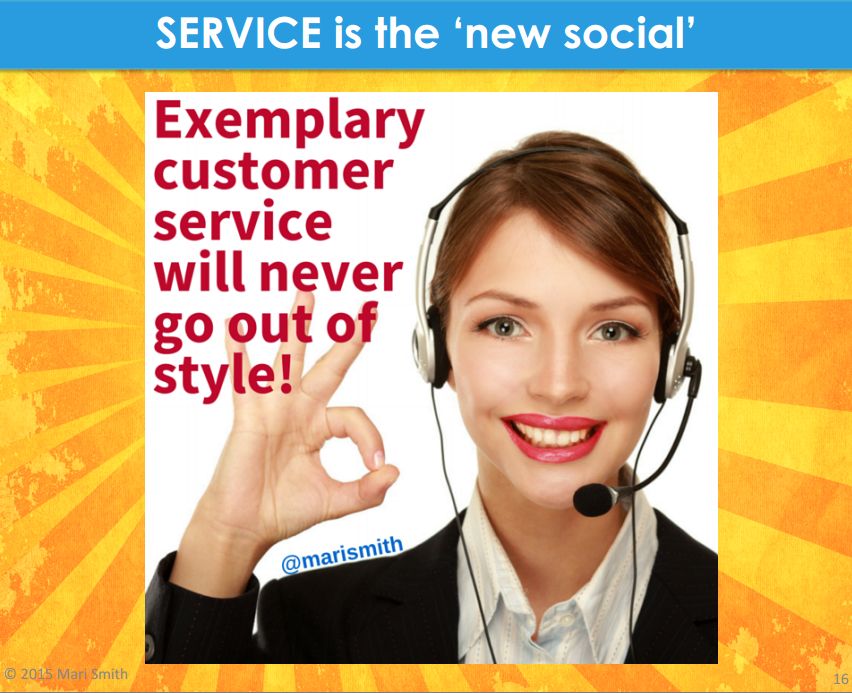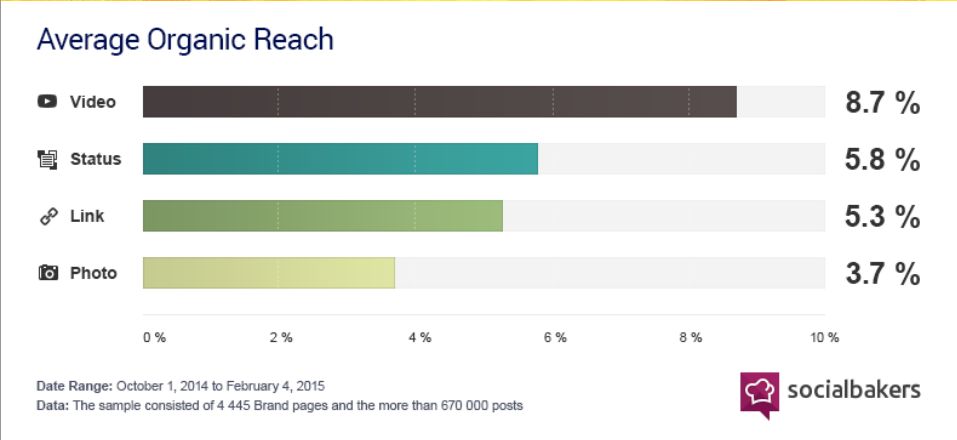If real estate is about “location, location, location,” then Facebook is about “context, context, context.”
Facebook is constantly evolving, and the smallest changes in its algorithm have a rippling butterfly effect on about 1.4 billion users (and 50 million business pages) around the globe. So understanding the context of the social network’s latest changes is key to reaching your audience there.
To borrow an analogy from hockey, brands need to “skate where the puck is going,” says Facebook marketing expert Mari Smith. In her presentation at the Social Media Marketing World Conference in San Diego, entitled, “Facebook Marketing: How to Get Results,” she explained how to stay ahead of Facebook’s changes.
Here are Mari Smith’s 5 tips to improve your Facebook marketing results this year.
- Organic Reach is declining.
With a ridiculous amount of content on the internet, there’s more competition in Facebook’s news feed than ever. Considering that the average user has 338 friends and liked 2 brand pages last year, there are 1,500-15,000 potential stories sparring for attention on any given login. Facebook runs each one through algorithms that measure more than 100,000 factors to showcase the top 300 stories. Thanks to this update overload, our attention spans are shrinking – so it’s no wonder why organic reach continues to decline.
In fact, less than 6 percent of your fans actually see your content in their news feeds organically; some suggest that it’s actually closer to zero.
What to do about it? Pony up.
“It’s pay to play, bottom line,” Mari says. “You’re not going to get much in organic reach. You have to set a nominal advertising budget. But you don’t just pay for reach on a silly cat photo; you specifically use strategic posts to amplify through paid reach that you can tie a direct ROI to.”
- Meaning trumps more.
When it comes to Facebook advertising (and posting in general), there’s far too much focus on lead generation, attracting hot prospects, and conversion – more reach, more fans, more likes – but what happens next?
“Focus on meaning, not ‘more,’” Mari says. “So many ads are totally wrongly targeted. Go deeper and more meaningful with a smaller, more targeted audience.”
You can argue that social media turns us into anti-social hermits who communicate via texting more than talking – but remember that Facebook’s founding goal is to help people make connections that benefit real relationships. Zuckerberg said, “Our goal is to reach a point where ads are as relevant and timely as the content your friends share with you.”
“Nobody gets up in the morning and says, ‘I can’t wait to see what this business has posted,’” Mari says. “They log on to check in on friends, family and loved ones. When you can craft marketing messages in a way that doesn’t feel too interruptive to that experience, it makes a big difference. People are in social mode first.”
What to do about it? Be human.
Feature real people in your marketing, like Facebook does. Interact like real people, too; use fans’ first names when you respond to them, and personalize it further by signing off with your first name at the end of a comment. Mari’s advice is to: “Think and act like a personal user first and a marketer second.”
- Service is the new social.
Even on a platform as ever-changing as Facebook, certain things are timeless.
“Exemplary customer service will never go out of style,” Mari says. “If you wow customers, they will become your word-of-mouth marketers.”
What to do about it? Develop soft skills.
Empathy is the most important trait on social media – as in any social interaction. Other skills, such as deep listening, genuine care and humility, go a long way in any relationship, even virtual.
- Stories (not sales) engage.
According to Facebook, Mari says, “campaigns that tell a brand story before asking people to buy something are significantly more effective than those that focus immediately on encouraging people to take action.”
Compelling content leads to engagement, which leads to conversion. Think about ways to craft your story so that fans will tell it for you.
What to do about it? Experiment with storytelling formats.
When it comes to organic reach, native video leads the way – as it gets priority in the news feed, and disabling autoplay can be tricky. Photos don’t get quite the reach that plain text or link updates do, according to this study from Social Bakers, but Mari says that variety is key.
- Burnout is inevitable.
Earlier this year, Rackspace’s Robert Scoble announced that he needed some “white space” – a few months’ break where he won’t be answering phone calls or emails, attending meetings, or logging into social media. Struggling with alcohol, facing health and family issues, the tech company’s startup liaison officer said he needed a break to get his family life, spiritual life, and business life figured out.
Even the top digital evangelists – Mari Smith included – encourage regular Face-cations. Time off can refresh your online strategy and, more importantly, preserve your sanity.
“Nobody got to the grave and said, ‘If only I sent one more tweet or liked one more Facebook post,” Mari says. Instead of being held back by the “fear of missing out,” she suggests embracing the “joy of missing out.”
What to do about it? Sign off and take a break!
>> Contact Bantamedia for help leveraging the latest social media marketing trends to grow your business. >>
Image credit: Mari Smith, Social Media Marketing World presentation






